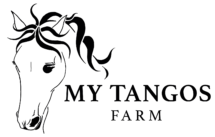Recently I went for some training with Camille. I decided I needed to push myself out of my comfort zone and play with some higher level movements. We had varied success in what we tried to achieve with Camille and this got me thinking. What do I see success as in my training? How do I quantify success in my head? Is it –
- I win my competition
- I score a 70+%
- I ride the movement I have been struggling with easily
- I am not worried when I ride
- I learn new skills
- I become engrossed in the moment
- my horse is happy to perform
Competition Wins
We all love a red rosette let’s not kid ourselves. There is something about that red frilly that makes us want to pop champagne. But the question is, should those rosettes define where we think we are in our training? In essence a dressage test is 4-5 minutes long at the levels I compete at. It’s a snap shot of different movements in different paces. It is a test of whether in a prescribed space I can follow a laid out set of instructions. Very often there is so much that is outside your control e.g. weather, surface, the competition, the judge. This could be the best work you have ever done and yet you might be last so does that mean your training has been a waste of time.
Aiming for a certain score
Control the controllables – what the judge awards you is not something you can control so basing your success criteria on a score can leave you very deflated and defeated. Their score might put you in the right place in the class but on a percentage that is far less than you wanted. So does this mean? Does this mean you aren’t successful?

So, what do I base my idea of success on now?
For me my focus has changed over the last few years. When scores and wins were my gauge, I found myself feeling very pressured and disenchanted with competing. Now in my training I focus on:
- How much I have learned
- How much happier or more confidently I can ride movements
- How much easier my horses find the work
- How content and relaxed the horse is to do the work
Training Now
So how do I deal now with the ups and downs that invariably happen in training now? Well, to give an example at my lesson on the first day last weekend I asked could we tackle flying changes. This is not something Camille has ever offered in jumping or at any time and I have never trained a horse to do them. in reality it was the blind leading the blind. Did we achieve our goal? NO, but I got so much more. As we worked on them we were tantalisingly close. Camille allowed me to prepare her, she changed in front but just didn’t step through with her hind leg. A fail you might say but NO I had the amazing opportunity to learn 4 different ways to help set a horse up to do a change. If the change had just happened that would have been the end. Great we can do a change but by ’failing’ my tool box got filled with extra gifts of insight and knowledge. So for me this was the greatest success. It is my change of focus that allows me to see these benefits rather than on whether the goal has been reached.

Day 2 was a totally different story. We decided that we would leave the changes and tackle half steps. I was shown a steady systematic way to begin to teach Camille. We prepared her and voilà Camille obliged. I was ecstatic to say the least. We repeated things on both reins and I began to understand the preparation and the aids but far more importantly how quickly I should reward her. 2 steps were all that was required and then instant relaxation. This was the little golden nugget for me. ‘Expect a lot, accept a little and reward often’. Many times I have read this quote and this was the first time I feel I truly understood it.
Take Aways
So what did I take away from this?
- I was delighted to find that even after a tough session the first day and travelling Camille still came out fresh, strong and willing. That, in itself, was success. It allowed me to know that the choices I am making about her care and feeding are working.
- It also let me know that my approach to her training is leaving her positive towards her work. Even though Camille was facing new and challenging work she was in the best mindset to cope
- I realised that we can raise the bar and tackle new challenges and more importantly achieve.
- Last but not least I realised that when things don’t go to plan it can be the best opportunity to gain the most knowledge.

So how do you measure your training success? What are your criteria? I don’t think there is any hard or fast rule that will or should be followed. Indeed your priorities may change over time and depending on the horse. I do think though it is good to sit and ask yourself the questions and find what will help you to stay focused on your training but far more importantly enjoy your training.
If you have any thoughts or ideas please do share them with me

